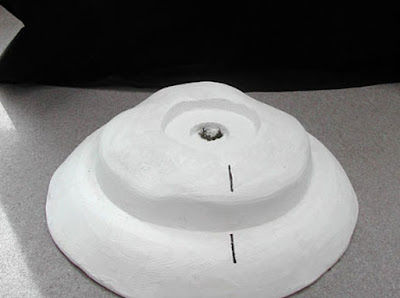Who among us doesn't have that one special piece of majolica that desperately cries out for restoration? Sometimes it is a piece with sentimental value that was damaged in a move. Sometimes it's just a piece that was so good that you purchased it in damaged condition. In either event trying to find a good restorer can be a challenge.
I recently came across the Web site of a talented British restoration specialist, Sarah Peek. I wasn't familiar with her work but apparently she has quite a good reputation. She was chosen by Christie's to restore the Minton peacock crest we wrote about in May. (http://etruscanmajolica.blogspot.com/2010/05/for-those-ornithologists-with-80000.html).
On her site she details the restoration work she did on the peacock as well as the restoration of a large Minton majolica fountain step by step. I found it absolutely fascinating and I thought you might too.
One note of interest before we show the restoration: This appears to be the same heron fountain design used in the St. George Fountain to support the kneeling figures of Aphrodite. http://etruscanmajolica.blogspot.com/2010/08/st-george-fountain.html
The fountain came to her completely destroyed. It had sat in a garden exposed to the elements and had seen multiple repairs throughout its lifetime. The fountain was fragmented into over 300 pieces with many missing parts.
The first step was to remove all the old repairs and reassemble the base of the figure around a plaster support. The base ring was assembled separately. Missing parts were filled in to add support.
The body of the fountain was then reassembled using clamps around a central steel dowel for support. Missing pieces were sculpted to fill in decorative details and painted to match.
Finally the supporting clamps are removed and the completed fountain placed on the restored support ring. The final pieces are glued into place while enamels fill in the missing color.
The completed fountain. This is absolutely top caliber work.
If you'd like to contact Sarah Peek's conservation studio for an estimate on your special piece of majolica or, for a more detailed explanation of this and other restoration work, go to her Web site: http://www.sarahpeek.co.uk/index.asp.




















No comments:
Post a Comment